 To enhance service speed and avoid tariff delays, we've opened a US warehouse. All US orders ship directly from our US facility.
To enhance service speed and avoid tariff delays, we've opened a US warehouse. All US orders ship directly from our US facility.
| Cat. No. | Product Name | Field of Application | Chemical Structure |
|---|---|---|---|
| DC10875 | Paquinimod Featured |
Paquinimod is a S100A9 inhibitor, which prevents S100A9 binding to TLR-4.
More description
|

|
| DC28230 | Loxoribine Featured |
Loxoribine (7-Allyl-8-oxoguanosine) is a guanosine analog with anti-viral and anti-tumor activities. Loxoribine is an orally bioavailable and selective Toll-like receptor (TLR) 7 agonist.
More description
|

|
| DC66322 | WAY-327512 Featured |
activate TLR8-dependent NF-kB signaling
More description
|
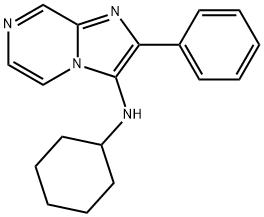
|
| DC73561 | E104 Featured |
E014 is a potent, selective TLR7 agonist with EC50 of 69 nM in Ramos Blue reporter assays, >500-fold selective for TLR7 over TLR8.
More description
|

|
| DC50032 | CU-CPT17e Featured |
CU-CPT17e shows strong NF-κB activation in TLR3, TLR8 and TLR9 HEK293 cells with EC50 values of 4.80±0.73, 13.5±0.58 and 5.66±0.17 μM, respectively. CU-CPT17e significantly improves the activity with 13.9±0.9 fold of NF-κB activation and an EC50 value of 4.8±0.7 μM. CU-CPT17e inhibits the proliferation of HeLa cancer cells by triggering apoptosis and arresting the cell cycle at the S phase. The induction of apoptosis by CU-CPT17e in HeLa cells is investigated. HeLa cells are cultured with increasing concentrations of CU-CPT17e or poly I:C or blank control (DMSO) for 24 h. Treatment with CU-CPT17e for 24 h at different concentrations (10 to 40 μM) results in an elevation of apoptotic cell population ranging from 10% to 17%, which is more effective than poly I:C at 5 μg/mL. These results suggest that the antiproliferative activity of CU-CPT17e against HeLa cells might result from its ability to directly induce apoptosis[1].
More description
|

|
| DC70332 | CU-CPD107 Featured |
CU-CPD107 is a TLR8-specific small molecule with unique synergistic agonist activities in the presence of ssRNA, but inactive without the aid of ssRNA.CU-CPD107 significantly inhibited of R848-induced signaling in HEK-Blue hTLR8 cells with an IC50 of 13.7 uM.CU-CPD107 only inhibited synthesized small-molecule agonist-induced TLR8 signaling without affecting other TLRs.CU-CPD107 synergistically increased IFN-β, TNF-α, IL-1β, IL-6, and IL-8 mRNA expression levels in the presence of 5 μg/ml ssRNA40 in HEK-Blue hTLR8 cells, whereas CU-CPD107 alone did not. CU-CPD107 only activated TLR8-mediated signaling in the presence of ssRNA.CU-CPD107 showed no pure agonistic activity, addressing a major challenge that has existed for previous TLR7 and TLR8 agonists as vaccine adjuvants or antiviral drugs.
More description
|

|
| DC49675 | D18 Featured |
D18 is an immune modulator. D18 acts as a TLR7/8 dual agonist (EC50=24 nM for hTLR7 and 10 nM for hTLR8, respectively). D18 increases PD-L1 expression through epigenetic regulation, thus sensitizing tumors to PD-1/PD-L1 blockade. D18 is a ADC cytotoxin uesd for the systhesis of ADC HE-S2.
More description
|

|
| DC10653 | TLR7-IN-1 Featured |
TLR7-IN-1 is a novel TLR7 inhibitor.
More description
|
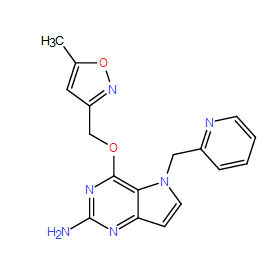
|
| DC31070 | M1002 Featured |
M1002 is a first-in-class HIF-2a agonists.
More description
|
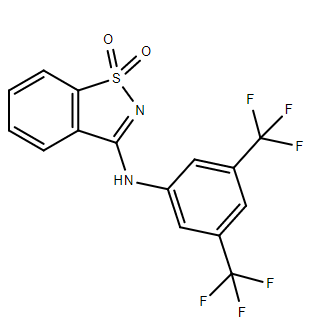
|
| DC10276 | C29 Featured |
C29 is a potential TLR2 inhibitor.
More description
|

|
| DC67233 | AYK004-C1 Featured |
AYK004-C1 is a TLR agonist. AYK004-C1 can be used to prepare immune adjuvants.
More description
|
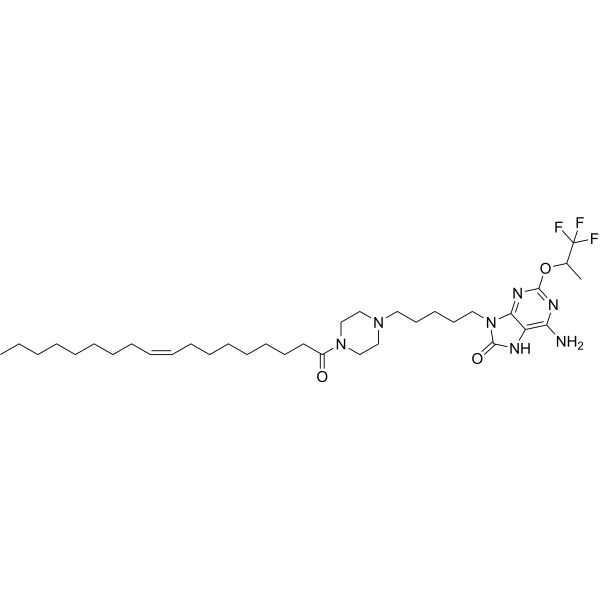
|
| DC28386 | GSK2245035 Featured |
GSK2245035 is a highly potent and selective intranasal Toll-Like receptor 7 (TLR7) agonist with preferential Type-1 interferon (IFN)-stimulating properties. GSK2245035 has pEC50s of 9.3 and 6.5 for IFNα and TFNα. GSK2245035 effectively suppresses allergen-induced Th2 cytokine production in human peripheral blood cell cultures. GSK2245035 is used for asthma.
More description
|

|
| DC67240 | KRN-7000(7DW8-5) Featured |
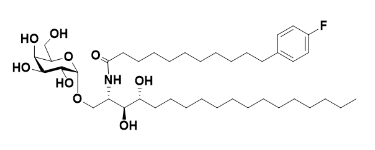
|
|
| DC67238 | KRN-7000(C34) Featured |

|
|
| DC67239 | KRN-7000(S34) Featured |
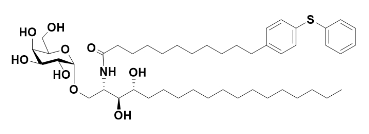
|
|
| DC28134 | α-Galactosylceramide Featured |
α-Galactosylceramide (α-GalCer) is a synthetic glycolipid with antitumorial and immunostimulatory. α-Galactosylceramide is a very potent NKT cell agonist and binds effectively to CD1d. The complex of α-Galactosylceramide plus CD1d binds the NKT cell TCR (T cell antigen receptor).
More description
|
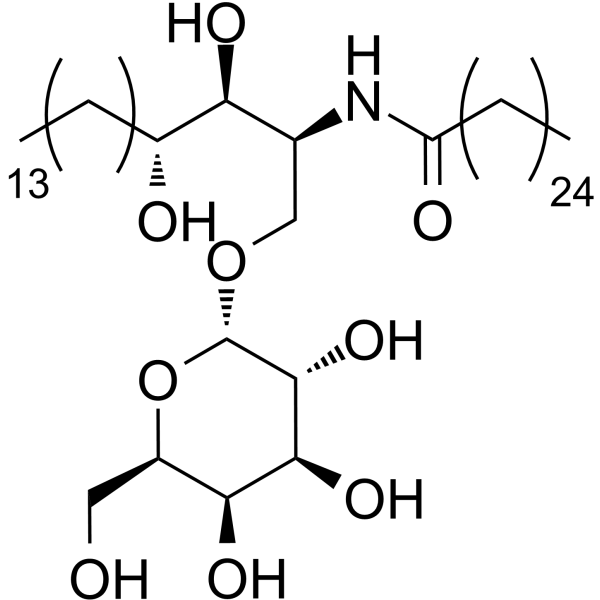
|
| DC67237 | TQL-1055 Featured |
TQL-1055 is a semi-synthetic analog of the saponin adjuvant QS-21 (HY-101092) and can be used as a prophylactic vaccine adjuvant. TQL-1055 exhibits robust adjuvant activity for influenza antigens. TQL-1055 combined with the acellular pertussis vaccine (aP) shows good tolerance and enhances the antibody response to pertussis toxin (PT) in mice and rabbits. TQL-1055 is promising for research of chronic hepatitis B.
More description
|
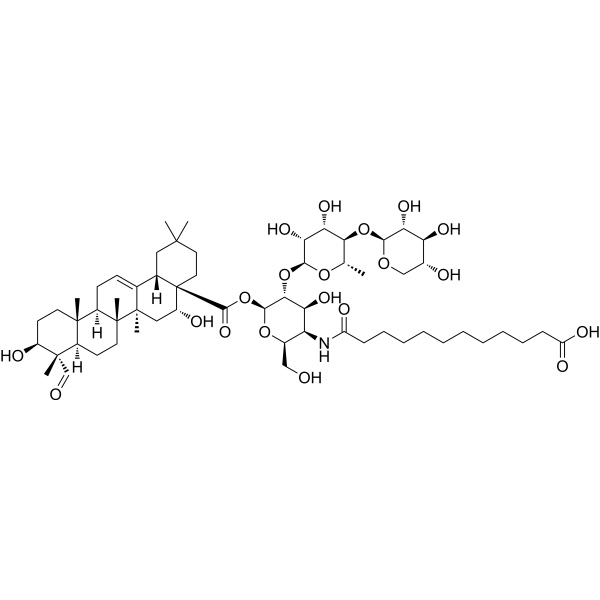
|
| DC67236 | QS-7 Featured |
QS 7 (QS 7 Api) is a saponin compound that can be extracted from the Quillaja saponaria tree. QS 7 activates immune cells, enhances their antigen presentation ability and cytokine secretion. QS 7 can be used as vaccine adjuvant for immunostimulating, anti-tumor, and anti-infectious activities.
More description
|
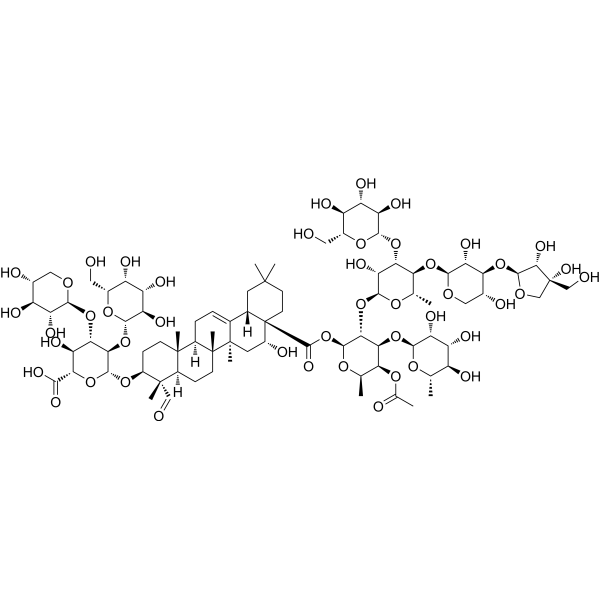
|
| DC67235 | CPG 7909 Featured |

|
|
| DC67234 | CPG-1018 Featured |

|
|
| DCAP008 | QS-21 Featured |
QS-21, an immunostimulatory saponin, could be used as a potent vaccine adjuvant. QS-21 stimulates Th2 humoral and Th1 cell-mediated immune responses through action on antigen presenting cells (APCs) and T cells. QS-21 can activate the NLRP3 inflammasome with subsequent release of caspase-1 dependent cytokines, IL-1β and IL-18[1][2][3].
More description
|

|
| DC67232 | AYK004-B1 Featured |
AYK004-B1 is a TLR7 agonist (EC50=0.2265 nM). AYK004-B1 can be used to prepare immune adjuvants.
More description
|
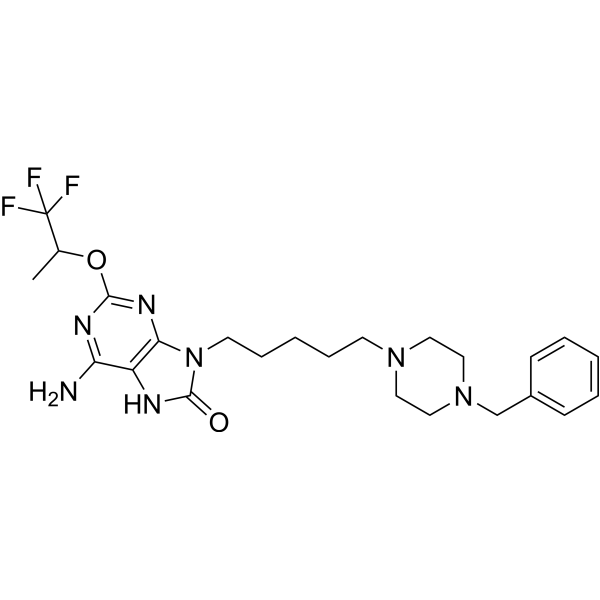
|
| DC67231 | AYK004 Featured |
AYK004 is a TLR7/8 agonist that enhances immune responses by activating the TLR signaling pathway. AYK004 is an adenine derivative with a favorable hydrophilic-lipophilic balance, which improves the loading capacity and stability in immunoadjuvant systems such as liposomes, while reducing the side effects of the immunoadjuvant system in systemic immunity .
More description
|
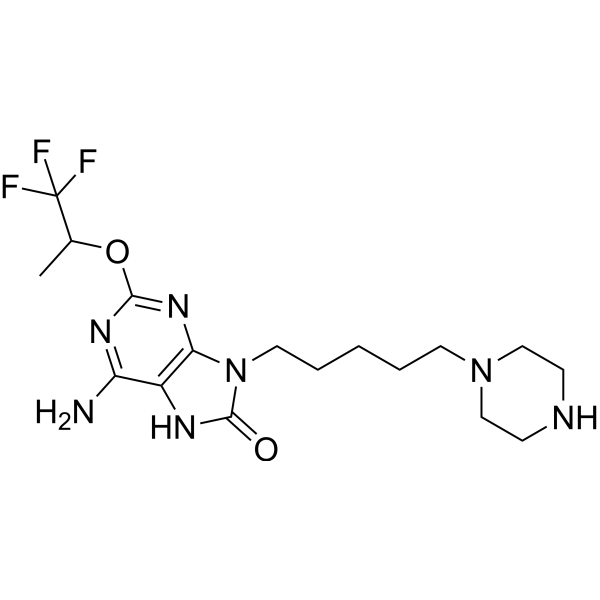
|
| DC67230 | AYK005 Featured |
AYK005 is a TLR7/8 immunologic adjuvant.
More description
|
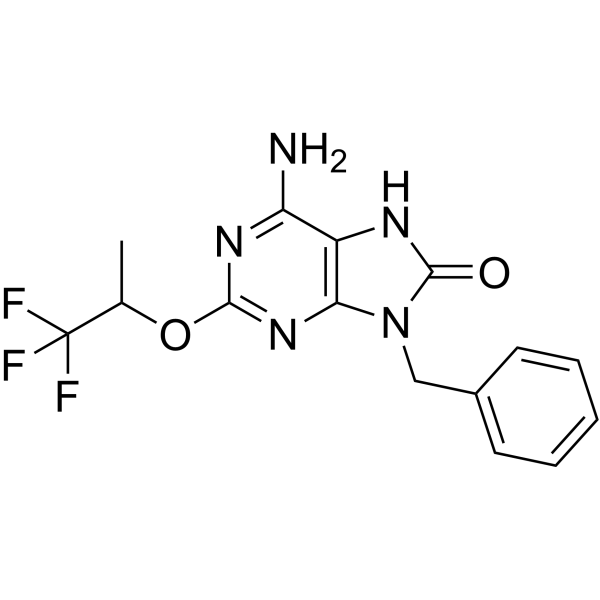
|
| DC67227 | UM-3006 Featured |
UM-3006 is a highly efficient TLR7/8 agonist that enhances immune responses by activating the TLR signaling pathway. UM-3006 holds significant research and application potential in the fields of vaccine adjuvants and immune diseases.
More description
|
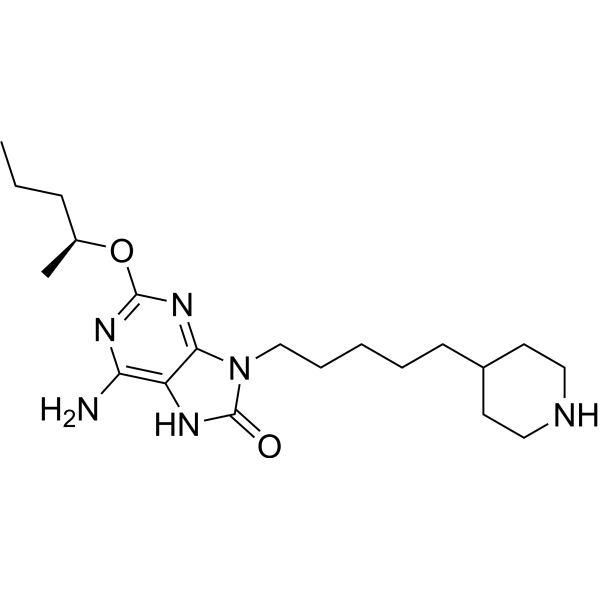
|
| DC67226 | 3D-MPLA Featured |
3D-Monophosphoryl Lipid A-5 (3D-MPLA-5) is a TLR agonist that can be used as an adjuvant for vaccines to enhance their immunogenicity.
More description
|
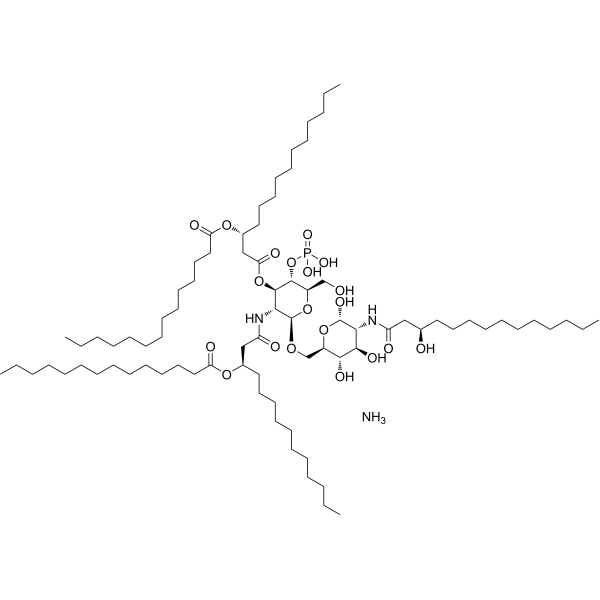
|
| DC67225 | 3D-MPL(12;16) Featured |
3D-Monophosphoryl Lipid (12,16) (3D-MPL (12,16)) free acid is a TLR agonist that can be used as a vaccine adjuvant to enhance the immunogenicity of vaccines[1].
More description
|
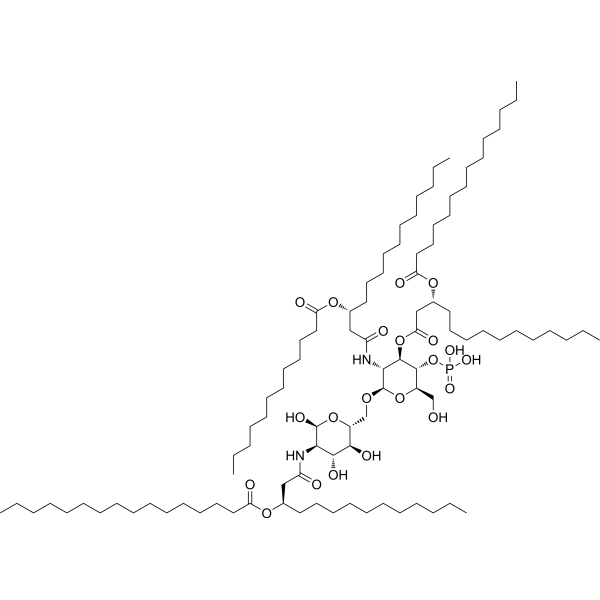
|
| DC67224 | 3D-Monophosphoryl Lipid (14) Featured |
3D-Monophosphoryl Lipid (14) (3D-MPL (14)) is a biochemical reagent.
More description
|
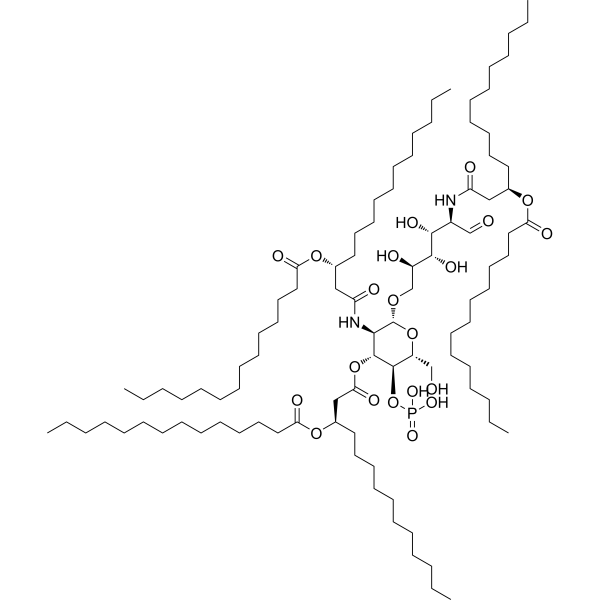
|
| DC67223 | Monophosphoryl Lipid A-12 Featured |
Monophosphoryl Lipid A-12 (MPLA-12) is a biochemical reagent.
More description
|
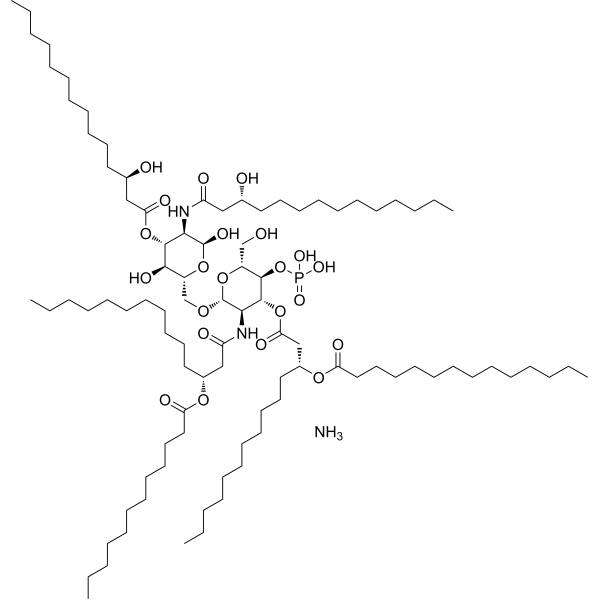
|
| DC46463 | Monophosphoryl lipid A Featured |
Monophosphoryl lipid A (Glucopyranosyl lipid A) is a toll-like receptor 4 agonist. Monophosphoryl lipid A is derived from the cell wall of nonpathogenic Salmonella. Monophosphoryl lipid A can be used for the research of immunization and vaccine.
More description
|

|